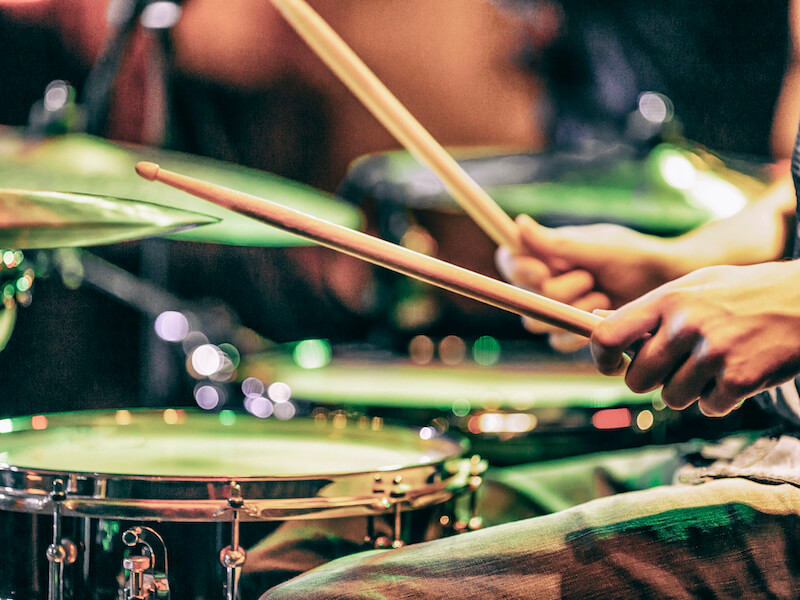
Musicians are cool! Their songs bring us so much happiness. But music is a lot more powerful when it’s loud, and that can be a hearing risk. The musicians themselves are at an increased danger of hearing damage since they are subjected to loud music just about every day.
Whether your income depends on music or not, you’ll still want to be able to hear your favorite songs when you’re pushing 60, 70, or 80. For musicians, protecting their hearing is the key to an extended and successful career. Hearing protection is also key to a lifetime of musical enjoyment for everyone.
Music is surprisingly loud
If you ask most individuals whether a jet engine is loud, they’ll likely say yes.
Is music actually that loud? If you ask someone whether an acoustic guitar or a lone violin is loud, they may not reply right away. Usually, when they hear the answer, they’re pretty surprised: that music is certainly loud! Your ears can even be damaged by classical music which can get to fairly high volumes.
A violin, for example, can produce sounds well over 90 dB. A leaf blower is around this loud. In Europe, for instance, they have regulations that require hearing protection for anybody who works in a work environment where there is noise above 85 dB.
And your hearing can be seriously damaged over time if you’re working with music every day, particularly if you don’t wear ear protection.
Can you protect your ears from noise damage?
Okay, musicians who want to maintain their hearing for years to come need to protect their hearing. So what can musicians do to safeguard their ears and still take pleasure in the music they love so much?
Well, here are a couple of easy things musicians can do:
- Take breaks: Like any part of your body, your ears can become exhausted and may need to get a little rest. So take frequent breaks from the noise. In this way, noises won’t overpower and harm your ears. With regard to hearing, how long you’re exposed is almost as significant as how high the volume is. The difference between the perfect amount of stimulation and too much can come down to taking frequent breaks.
- Track your volume: Knowledge is power, right? So it makes sense that you should always be aware of what volume of sound you’re exposing your ears to. Usually, this is as easy as tracking your volume settings on amps and receivers. But you can also buy a volume meter app for your smartphone to make it convenient to track the real-world volume levels your ears are experiencing from day-to-day. If the meter detects volumes above 85dB consistently, you’ll want to address this.
Ear protection is important
Using hearing protection is the number one most effective way to protect your hearing. A lot of musicians are worried that hearing protection will muffle the sound and impact its overall sound quality. But depending on what type of hearing protection you use, that may not always be true.
- Ear plugs made specifically for musicians: Most people are most likely familiar with disposable ear plugs. They don’t always fit well, but they do reliably block a lot of sound. They’re inexpensive, easy to get, and easy to throw away. For musicians, they aren’t a great solution. But earplugs just for musicians are also available at a slightly higher cost. These earplugs use fancy manufacturing processes (mostly they’re made out of very specific materials and are designed to conform nicely to the ear) to preserve audio fidelity while decreasing the noise you hear by something like 20dB. For musicians who need a moderate amount of protection on a budget, this solution is perfect.
- Electronic earplugs: Electronic earplugs function in basically the same way as high-quality, non-electronic earplugs. Most of the sound will be blocked by the earplug itself. What you hear will instead be routed in by the earplug itself. For individuals who work in really loud environments and need better control of the volume, these earplugs are perfect.
- In-ear monitors: Most music is electronic now, or at least amplified by electronics. A device, known as an in-ear-monitor, is placed inside of your ear and transmits signals in electronically. It’s like a special little speaker for your ear, and most monitors can block out sound from the outside world (thanks to a rather tight fit and special design). This means you can hear exactly how you sound, at a volume you control. For musicians who electronically amplify their instruments these in-ear-monitors are the perfect answer.
Safeguard your ears, and protect your career
It’s best to begin safeguarding your hearing early, before any significant harm occurs. With options available at nearly every price point, there are easy ways for everyone to safeguard their hearing and their future. Remember, ear protection for a musician is an investment in your career. It’s one way to ensure you’ll be making amazing music for years (maybe even decades) to come!
Give us a call so we can help you get started.
